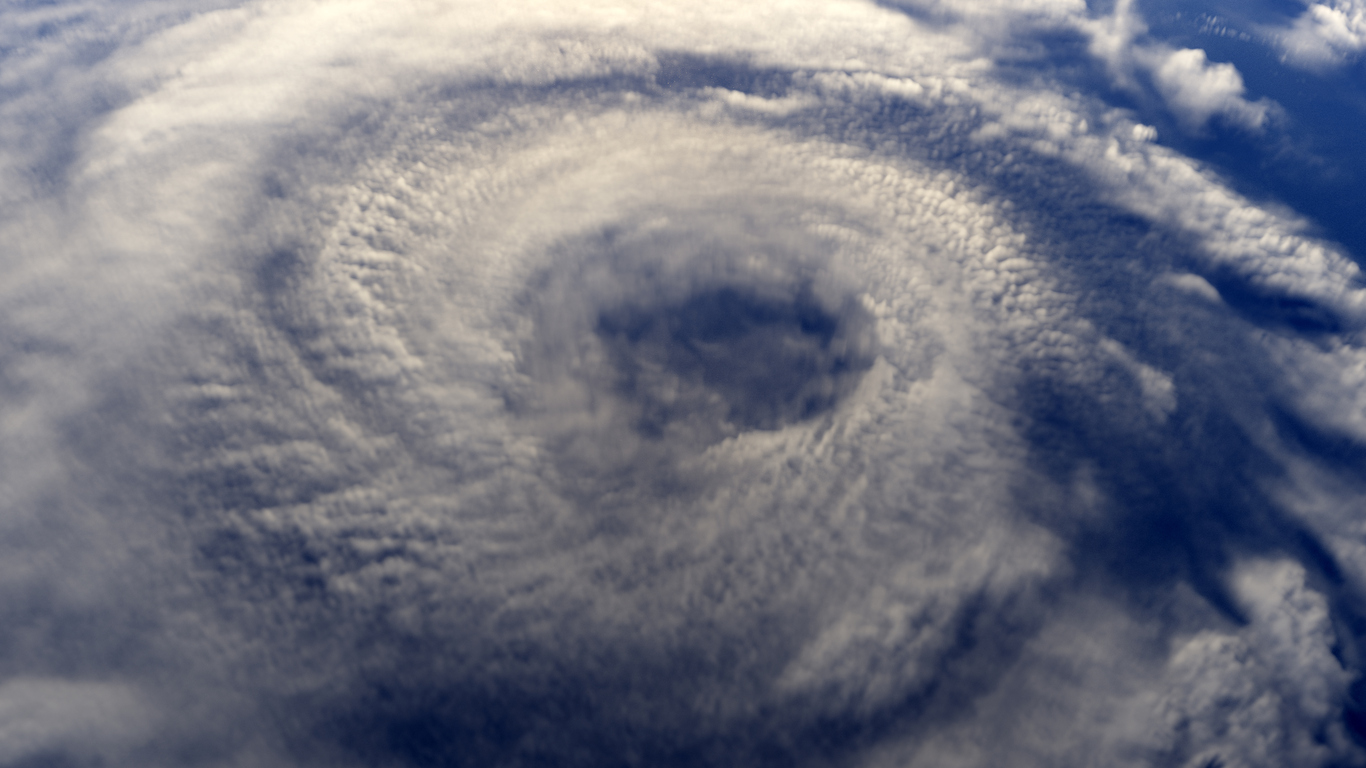Laura made landfall overnight as a storm of historic proportions, with wind speeds of 150 miles an hour, according to the National Hurricane Center, surpassing Hurricane Katrina in 2005. By early Thursday morning, the winds had weakened to 105 miles an hour.
About 383,000 customers in Louisiana and some 93,000 customers in Texas were without power Thursday morning, according to poweroutage.us, which tracks outage reports from utilities. The extent of damage wasn’t yet clear along the western Gulf Coast, but people who didn’t evacuate posted videos overnight on social media of roofs coming off hotels, windows blowing out of office buildings and roads made impassable by flooding.
Hurricane-force winds extended outward for 60 miles, and storm surges could be unsurvivable, the center said. While the western Gulf Coast is less densely populated than the New Orleans area, Laura, like Katrina, made landfall in the dead of night, complicating any last-minute evacuation or rescue efforts.
In hard-hit Vermilion Parish, La., southeast of Lake Charles, a gauge on the Vermilion River showed the water reaching nearly 14 feet, far above the typical 4-to-6-foot range, according to federal data.
The sheriff’s office said rescue efforts wouldn’t begin until well after the storm passed Thursday. “If you choose to stay and we can’t get to you, write your name, address, Social Security number and next of kin and put it [in] a ziplock bag in your pocket,” the sheriff said in a post on Facebook.
Much of Interstate 10, a main east-west artery in south Louisiana, was closed as a result of the storm.
Laura is expected to dump 6 to 12 inches of rain across Louisiana, Mississippi and Arkansas, and bring winds of up to 50-miles-per-hour as far west as Little Rock.
More than 430,000 homes in Texas and Louisiana, with a reconstruction cost value of $88.6 billion, were at risk of storm-surge damage, according to an analysis by CoreLogic Inc., a financial and property-data company.
Laura struck near the heart of U.S. fuel-making and chemicals production, much of which is located in low-lying areas along the Gulf Coast. Nearly half of the nation’s refining capacity is on the Gulf Coast, federal data show, with about half of that within Laura’s potential path, analytics firm IHS Markit said.
Refineries, chemical plants and ports closed in preparation for the hurricane’s arrival, including Saudi Arabian Oil Co.’s Motiva refinery, the nation’s largest fuel-making facility.
Evacuation orders turned Beaumont, a Texas city of about 116,000 people, into a ghost town with boarded-up businesses and empty streets. Some residents were still scrambling to leave Wednesday evening. Arthur Richardson, 63 years old, said he had planned to ride out the storm, as he had during previous hurricanes, but its increasing intensity left him spooked. He decided late Wednesday afternoon to evacuate to Houston.
“When Ike was here, the whoopin’ we took, it looked like it was gonna come in through the house,” he said of the 2008 hurricane. “I don’t want to go through that again.”
Vice President Mike Pence said late Wednesday in remarks at the Republican National Convention that the Trump administration would help those in the storm zone and is coordinating relief efforts with state and local governments along the Gulf Coast.
“Stay safe and know that we’ll be with you every step of the way to support, rescue, respond and recover in the days and weeks ahead,” Mr. Pence said.
Forecasters warned of large and destructive waves that could cause catastrophic damage from Sea Rim State Park in Texas to Intracoastal City along the Gulf Intracoastal Waterway in Louisiana. The storm surge could reach as far as 40 miles inland, backing up rivers and producing dangerous flooding.
Officials in Texas and Louisiana issued mandatory evacuation orders in more than a dozen coastal cities and counties from Grand Isle, La., to Galveston, Texas, affecting hundreds of thousands of people. Voluntary evacuation orders were in place in numerous other jurisdictions.
Laura had moved toward shore at 15 miles an hour, far faster than storms including 2018’s plodding Hurricane Florence, allowing less time for extensive planning.
The Covid-19 pandemic complicated Wednesday’s last-minute preparations. Officials adapted shelters with distancing measures and masks to accommodate those fleeing as the coronavirus continues to grip both states.
In Austin, Texas, evacuees were tested for Covid-19 as they checked into shelters. In Lake Charles, residents fleeing the town by bus were required to wear masks and maintain social distance.
Louisiana Gov. John Bel Edwards said the government booked hundreds of hotel rooms to house evacuees, to avoid crowding traditional shelters.
Hurricane Laura intensified rapidly early Wednesday, fueled by warm water in the Gulf of Mexico and unimpeded by winds that could disrupt it.
Mr. Edwards said the impact from the storm’s powerful winds would be stronger than officials initially believed and that all of coastal Louisiana should brace for a storm surge. He likened the storm to Hurricane Rita in 2005, which followed a path similar to Laura’s, damaging or destroying thousands of homes and inundating coastal communities.
Laura comes fairly early in what has already been an active hurricane season, which stretches from June through November. It is rare for a storm to make landfall in the Gulf Coast as a Category 4 storm.
Phil Klotzbach, a hurricane specialist at Colorado State University, said that Laura is now the strongest August hurricane in the Gulf of Mexico since Katrina and a historically fierce one. “No Category 4-5 hurricanes have made landfall in extreme eastern Texas or southwest Louisiana on record” since 1851, when record-keeping began, he said.
The National Oceanic and Atmospheric Administration said this season it expects to see as many as 10 hurricanes—of which three to six are expected to be rated a major hurricane of Category 3 or higher. The prediction is based on warmer ocean temperatures and weaker trade winds in the main storm-development region of the tropical Atlantic and Caribbean Sea, forecasters have said.













